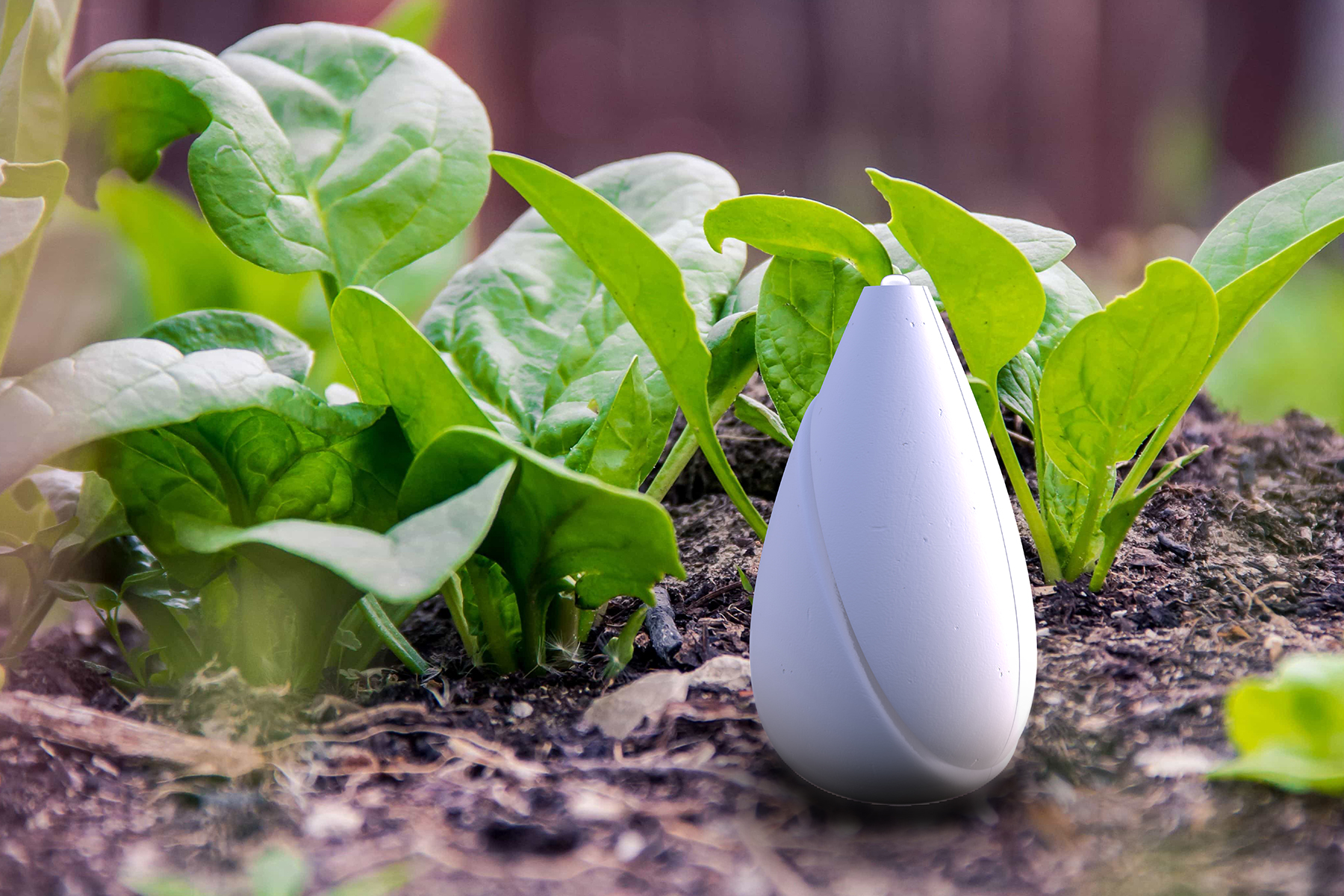
Tulip Plant Monitoring System
A system for monitoring the garden environment and diagnosing plant health.
This monitoring system uses multiple plant monitor probes that collect data on the garden conditions and transmit that data to a handheld spectrometer. When walking around the garden taking spectrometer readings, data is passively transfered from the garden to your hand.
Plant Monitors
There are many different plant sensors available on the market; common elements that are monitored include soil moisture levels, air temperature, soil temperature, fertilizer levels, and ambient light levels. Many sensors are WiFi enabled, only allowing for use in areas which are covered by WiFi signal. Although this is suitable for indoor potted plants, it may be problematic when used outdoors or in larger gardens.
Handheld Spectrometer
Raman spectroscopy is a process that uses a laser beam to excite a system, and analyzes the electromagnetic radiation given off by the system to determine a substances chemical makeup. As spectrometers are becoming more compact and affordable, the applications of this technology are becoming more widespread. Specifically, this technology has been used in order to diagnose issues that affect plant health, and determine the nutritional content of crops without destroying the plants.
Combining the two aforementioned technologies, this system monitors plants while using spectroscopy to aid in the care and maintenance of the gardener’s plants.
User
This system is targeted towards gardeners that wish to grow their own food and want an easy and effective way to optimize their gardens.
Data
Sensor probes that are planted in the soil will use a thermistor, soil moisture and fertilizer probe, and ambient light sensor to collect data about the garden conditions.
Through manual readings, the spectrometer will collect data about the the chemical makeup of plants in the garden. The spectrometer's data is then downloaded to the user's computer using a micro USB port, which also charges the device.
Analysis
The data collected can be uploaded onto the users computer, through an associated app and can be analyzed to provide valuable insights into which plants should be planted into specific areas of the garden, and what conditions are helping and hindering the plants that already live there.
Bluetooth
Both sensor probes and spectrometer are Bluetooth enabled and have memory chips. This allows the probes to collect and store data over a large expanse of time, and have that data collected when within range of the spectrometer. Additionally, when mapped on the online app, the location of the probes can triangulate the location of the spectrometer, allowing for metadata to be collected along with spectroscopy readings.
Mapping
The user can create a virtual map of their garden through use of an associated app. He or she will be able to identify the specific locations of the sensors they have, giving a better overall picture of their garden environment.

















